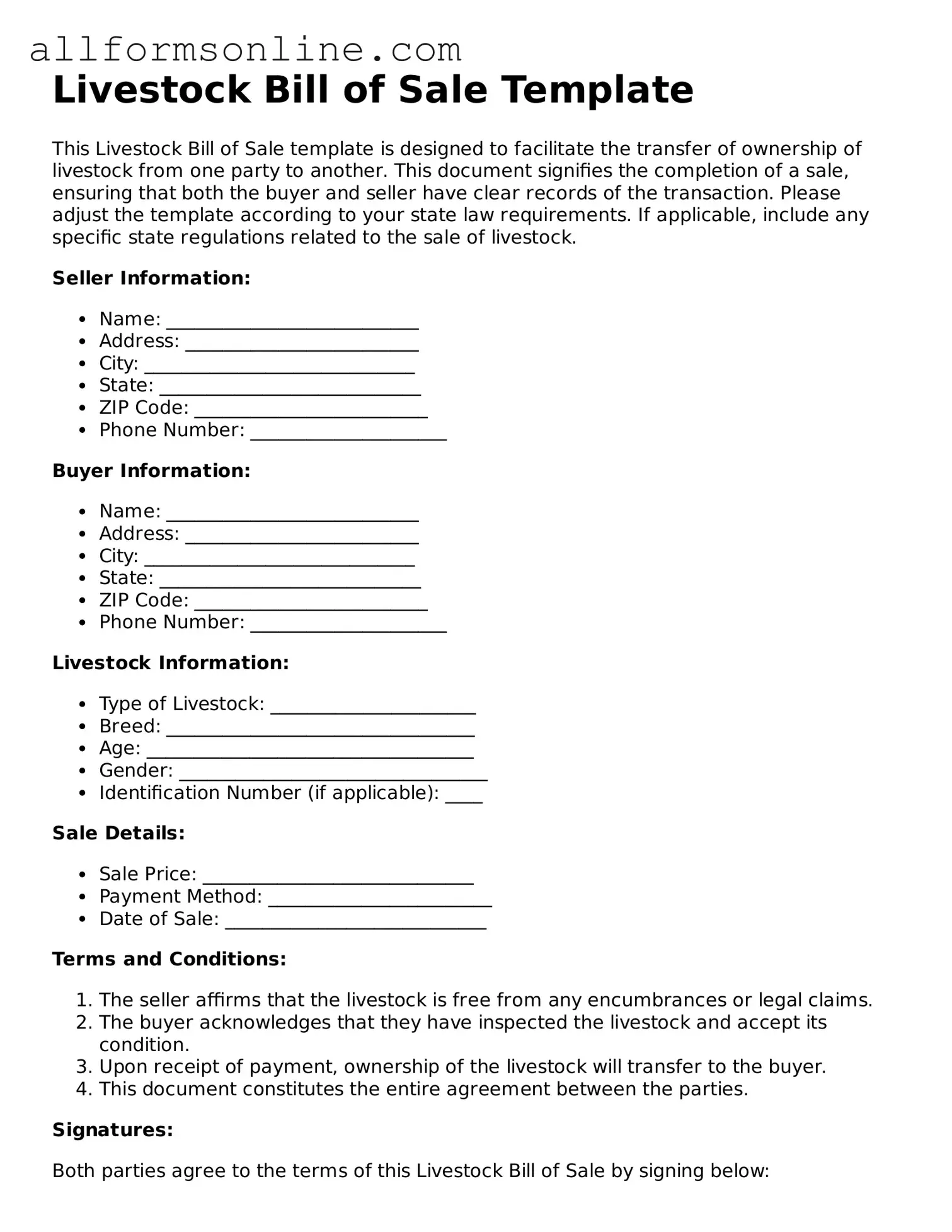What is a Livestock Bill of Sale form?
A Livestock Bill of Sale form is a legal document used to transfer ownership of livestock from one party to another. This form serves as proof of the transaction and includes important details such as the buyer's and seller's information, a description of the livestock being sold, and the sale price. It helps protect both parties by clearly outlining the terms of the sale.
Why is a Livestock Bill of Sale important?
This document is essential for several reasons. Firstly, it provides legal protection for both the buyer and the seller. In case of disputes, having a written record of the transaction can be invaluable. Secondly, it can be required for registration purposes with certain agricultural organizations or for tax purposes. Lastly, it ensures that both parties agree on the details of the sale, reducing the likelihood of misunderstandings.
What information should be included in a Livestock Bill of Sale?
To create a comprehensive Livestock Bill of Sale, several key pieces of information should be included. This includes the names and addresses of both the buyer and seller, a detailed description of the livestock (such as breed, age, and identification numbers), the sale price, and the date of the transaction. Additionally, any warranties or guarantees about the livestock's health or condition should be noted, as well as the method of payment.
Do I need to have the Livestock Bill of Sale notarized?
Notarization is not always required for a Livestock Bill of Sale, but it can add an extra layer of security and legitimacy to the document. Some states may have specific requirements regarding notarization, especially if the livestock is of significant value or if the transaction involves financing. It’s wise to check local regulations or consult with a legal expert to determine if notarization is necessary in your situation.
Can I use a Livestock Bill of Sale for different types of livestock?
Yes, a Livestock Bill of Sale can be used for various types of livestock, including cattle, sheep, goats, pigs, and horses, among others. However, it’s important to ensure that the form is tailored to the specific type of livestock being sold. Different species may require additional information, such as health records or registration details, so be sure to customize the form accordingly to meet the needs of your transaction.
